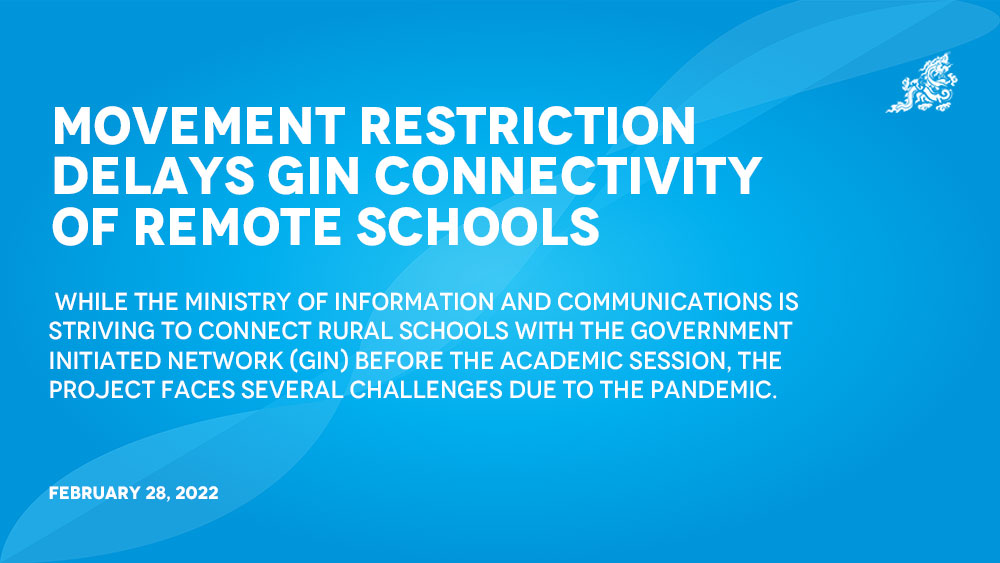Phub Dem
While the Ministry of Information and Communications is striving to connect rural schools with the Government Initiated Network (GIN) before the academic session, the project faces several challenges due to the pandemic.
According to a press release from the Department of Information Technology and Telecom, 221 schools are connected to fibre and internet facilities. Work to connect 157 schools is underway through the GIN project.
However, it states that the project’s commissioning in those schools has been delayed despite the completion of fibre-related work, as project teams are stranded in Covid-19 high-risk areas of Wangdue, Sarpang, and Samdrupjongkhar.
Additionally, there are delays with connecting 30 schools under Samtse and Chukha due to a shortage of materials. However, it states that efforts have been made to address the issues by mobilising resources from Thimphu, Samdrupjongkhar, and Pemagatshel. Lockdowns have adversely affected the movement of both people and goods.
Some of the challenges include movement of goods from Thimphu stores, mobilising resources to Samtse and Chhukha, and restrictions on inter-gewog or dzongkhag movements.
The project teams could reportedly lay less than 2km of fibre due to geographical gradient. Additionally, right of way clearance of power lines is one of the critical challenges affecting the execution of the project. “Connecting all the schools before they open for the next academic year is still unsure.”
The project explored providing radio connectivity as an alternative for schools far away from the nearest nationalised fibre and gewog centres.
For instance, Tradijong ECR is categorised as a primary school, and Trashibi Primary Schools in Zhemgang, and Sarjung Primary School in Samdrupjongkhar are more than 30km away from the nearest nationalised fibre or gewog centres.
Moreover, radio connectivity is being explored for primary schools that educate Classes PP to III and are more than 10km away from the nearest nationalised fibre or gewog centres.
The ministry has stated that it is trying its best to leave no schools without internet connections from the next academic year to provide internet access to the coding curriculum.
The MoIC is executing the GIN project, one of the nine components of the Digital Drukyul Flagship programme.
The network is expected to connect more than 1,000 government agencies with optical fibre infrastructure, including research and educational institutes and health facilities. It will also connect four domestic redundant fibre rings to ensure redundancy in the national fibre network.
Some of the major activities are extending the existing core network by laying optical fibre cables in rural parts of the country and deploying ICT equipment to provide high-speed internet services and links to the Global Research and Education Network.
The network will also provide dedicated high-speed intranet connectivity to improve public service delivery such as G2G, G2C, G2B, video conferencing services and other e-government applications.
The project was initiated in June 2019 with approval from the government.
The project achieved physical progress of about 58 percent, comprising 889 agencies connected with fibre optic links, activated 480 sites, and completed the connection of 2 out of 4 domestic rings.
With the completion of domestic-redundant rings Kanglung-Motanga and Simtokha-Lobesa, the reliability of telecommunication services is expected to improve.
Work to connect the Bumthang-Lhuentse and Dagapela-Lhamoidzingkha rings has also begun.


